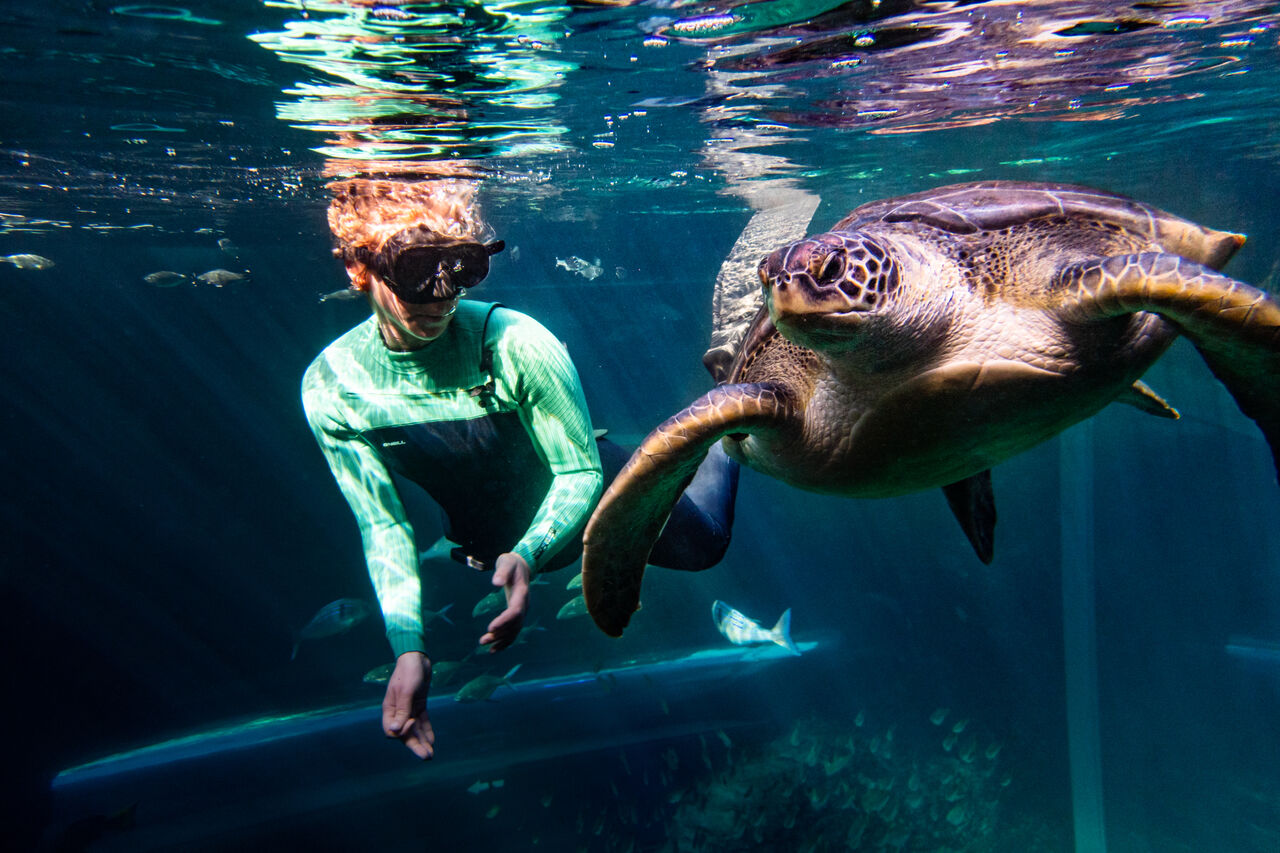After eight years of rehabilitation, a successful release, and 97 days of tracking Bob in the big, blue ocean, we have ground-breaking news: Bob is a girl!
How do we know?
Dr Bernice van Huyssteen, the Turtle Conservation Centre’s specialised turtle vet, says that determining a turtle’s sex can be tricky. Most animals’ sex can be determined by taking a blood sample for a DNA (genetic) test, which is a simple process and an easily accessible test. However, when it comes to turtles, this type of testing is inadequate.
“In sea turtles, the males and females are genetically the same,” says Dr Bernice. Turtles’ sexes are determined by the temperature of the sand in which they hatch: if the eggs incubate in temperatures below 27.7°C, they will be male, while temperatures above 31°C will result in more female hatchlings. Therefore, male and female turtles' genetics are the same. This is called temperature-dependent sex determination.
Even other methods of identifying the sex in juvenile turtles are tricky. Before they reach maturity, turtles’ sex organs (ovaries in females and testes in males) look very similar on ultrasound examination.
So, our veterinary team faced the question: how else to determine Bob’s sex as a relatively immature green turtle? During her research, Dr Bernice came across a study published in 2015 that used testosterone levels to determine whether green turtles were male or female. Higher testosterone levels indicate that the turtle is male, while lower levels indicate female. The study was proven to be very reliable as the results were verified when the turtles in the study matured.
On the day of Bob’s release, our veterinary team took blood samples from her. This was put on ice while we conducted research into sex determination and planned the tests. Dr Bernice couriered the frozen blood sample to a specialist endocrine laboratory in Pretoria, where the testosterone test was conducted.
Finally, our team compared Bob’s testosterone levels with the normal ranges for males and females, as determined in the study. It concluded that Bob is female!
What does this mean for Bob?
“One day, Bob will hopefully return to the beach where she hatched to bring forth a new generation of turtles!” says Dr Bernice.
Before the test results, our team at the Turtle Conservation Centre assumed that there would be little tangible evidence of Bob’s future movements – male turtles rarely come ashore and spend most of their lives at sea, while females return to the same beach every few years to nest.
Now that Bob’s sex has been confirmed as female, we are excited about the possibility of her coming ashore to nest. As she is kitted out with satellite, flipper, and acoustic tags, we could likely observe her when she does. Female green turtles, like Bob, nest every two to three years and can lay up to 2 300 eggs in a lifetime!
Talitha Noble, our Turtle Conservation Centre’s Manager and one of Bob’s primary caregivers, was delighted with the news. "There's a chance Bob will be spotted on the beach when she (hopefully) nests one day, and we could continue our journey with her. We could even retag her to continue tracking her movements! The idea of lots of little Bobbies in the world is an exciting one!"
How does our turtle team feel about the results?
“It was thrilling to find out that Bob is a female. In the past, we have tried to determine her sex via ultrasound without success. It was so great to get an answer, finally! I was very pleased that the test worked and that we got an accurate result,” says Dr Bernice.
This test sets a precedent for the future sex determination of green turtles at the Turtle Conservation Centre. Dr Bernice judges that Bob is the first turtle in South Africa whose sex has been successfully confirmed through testosterone testing. This is a big deal for the Turtle Conservation Centre, which often works with stranded green turtles.
By using testosterone tests on stranded green turtles, our turtle team will be able to contribute to the scientific database around population demographics. Testosterone testing also adds value to our understanding of green turtles’ conservation status. More testing of this kind on green turtles in our rehabilitation programme can aid in protecting and managing species numbers by tracking their movements. Climate change and global warming may cause an increase in female turtle hatchlings over males, due to the higher temperatures of the sand in which turtle eggs incubate. With this in mind, our Turtle Conservation Centre would release rehabilitated turtles where they would have greater chances of finding a mate.

Bob’s journey highlights the importance of our work at the Turtle Conservation Centre. Bob arrived as an injured little turtle, quickly becoming an anti-plastic ambassador and a beloved member of the Aquarium family. Now, she has the potential to mother a new generation of green turtles. This story shows why rehabilitation is so important – after eight years of care, enrichment, and treatment, Bob went from being “unreleasable” (a hopeless case) to possibly continuing the green turtle species in the wild.
Is Bob’s name going to change?
Bob will always be Bob to our Aquarium family; we think she should stay that way!
Related News
Sign up to our Newsletter
Receive monthly news, online courses and conservation programmes.




